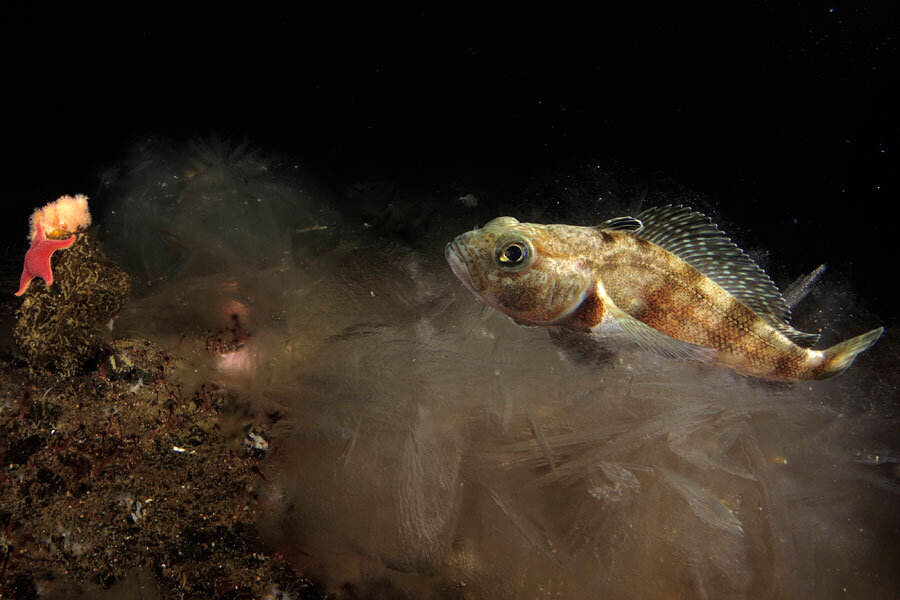Antarctic fish with ice in its veins: How does it stay alive?
Loading...
Even after being studied for decades, the notothenioid, a bony fish that thrives in frigid waters, continues to hold surprises.
Notothenioids own the waters circling Antarctica known as the Southern Ocean; one of the few species that can survive in seawater temperatures as low as 29 degrees Fahrenheit, it makes up more than 90 percent of the fish biomass in the region. It's no wonder, then, that scientists began to investigate how these animals thrive in this icy environment without freezing over.
Scientists have been revealing startling facts about the notothenioid for more than four decades now, including the discovery, in the 1960s, of antifreeze proteins inside these fishes, a vital tool for their survival. But according to a new study published in the journal Proceedings of the National Academy of Sciences, researchers have revealed that these proteins may not be as helpful as they were once thought to be. The proteins do indeed help prevent water from freezing in the fish, but it turns out they also prevent ice from melting.
"We've known for a long time that the antifreeze proteins are at the essence of how these fishes survive in their freezing environment. But we're still working out the details, and this is one of those details," Paul Cziko, lead author of the paper, told the Monitor.
Mr. Cziko, a doctoral candidate at the University of Oregon, worked with Christina Cheng and Arthur DeVries, a husband-and-wife team of animal biologists at the University of Illinois. Devries revealed in the late 1960s that antifreeze proteins existed in the bodies of notothenioids. In the 1990s, he discovered that the fishes were also carrying ice crystals in various organs, such as the gills and the spleen.
In this new study, Cziko's team tested fish in the lab by warming them to a point at which the ice in their bodies completely melted. These were temperatures, though, that the notothenioid never experiences in its own environment. They also examined temperature data logged continuously over the last 11 years in McMurdo Sound, Antarctica.
The research group found that the ice crystals didn't melt at their expected melting point of about 30 degrees Fahrenheit, but instead remained intact. The fish continued to contain ice even after researchers raised the temperature further another 1.8 degrees Fahrenheit, and this was primarily due to the antifreeze protein.
Though the life-saving protein was given the name "antifreeze," it works differently from, say, the liquid you mix with your windshield wiper fluid, according to Cziko. Rather than acting like a salt and lowering the freezing point, the notothenioids' antifreeze proteins bind themselves to the ice crystals in their bodies and alter the surface of the crystals so that they have a hard time growing any larger.
This mechanism doesn't just make it very hard for the ice crystals to grow, though. The proteins bind themselves so tightly that they also make it difficult for the ice to get any smaller, even in above-freezing temperatures.
"When people are studying antifreeze proteins they're looking at the ability of the organisms to deal with cold temperatures and not warm temperatures," says Cziko. "All their focus is towards 'How much does it protect against freezing?' and people just kind of missed that there could also be an anti-melting effect that's important."
In controlled settings, scientists have been able to heat ice above its melting point without having the ice melt. But Cziko says this may be the first example of "superheating" found in nature.
So what does this superheated ice mean for the fish? Even in the slightly warmer summer months when the notothenioid has a chance to thaw out, some ice crystals linger.
Whether or not there are any adverse effects on the fishes' bodies is still unknown. The long-term cost of having the protein, Cziko says, is a question for further research.
"If they can tolerate it, maybe they've evolved some other mechanism to deal with these ice crystals inside their bodies," says Cziko. "And maybe in the long-term it does kill the fish and they're not that good at dealing with it."
The highest concentration of ice crystals resided in the fishes' spleens. Cziko says it's possible that the spleen is trying to filter these ice crystals out of the blood to prevent their causing problems in other parts of the body.
Cziko also says research on this particular evolutionary puzzle provides us with a better understanding of the progression of all species.
"This shows that with every good evolutionary innovation, some potentially bad or unintended consequences come along with that," says Cziko "Evolution is a stepwise process. You take two steps forward, and take one step back."








